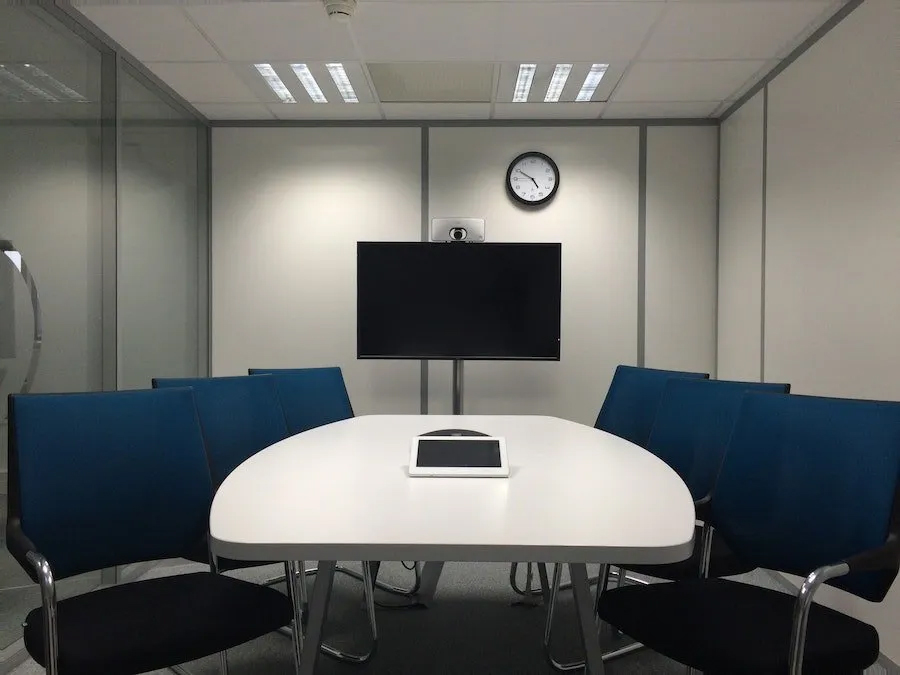Video Conferencing Suites
What is video conferencing?
Video conferencing is method by which people in different locations can conduct a meeting and both see and hear each other. This ability to see the remote participants as well being able to hear them has many benefits over audio-conferencing.

Video conferencing is now widely used by all industry sectors. Multinational companies use it to communicate with international branch offices, whilst smaller companies use videoconferencing to enable them to work with clients and suppliers in different countries. Video conferencing is not only used internationally, many legal firms and consultants use video conference systems to avoid billing clients travel time and to be able to carry out more client meetings in any given time period. Schools and universities also use video conferencing to carry out distance learning and to be able resource or include lecturers from other locations.
Video conferencing should not be considered in 'black and white' terms - there will always be a need to travel to meet clients or partners especially during the important early stages when relationships are being built. Where videoconferencing wins out is being able to maintain those relationships easily and cost effectively.
The equipment required for video conferencing is simple to operate. On screen menus enable you to enter the number you want to call or select it from an address book. Gone are the days where videoconferencing required specialist technicians - now everyone in your office can be shown how to place calls with a 10 minute training session.
Modern video conference systems enable users to share documents and computer images with the remote (far end) party. When videoconferencing is used in this manner it becomes part of a collaboration or distance learning system
Who would benefit from video conferencing?
Video conferencing enables more frequent meetings between people based in different locations with out the need for costly travel or lost opportunity time. Any organization which works with or wants to work with remote clients or suppliers stands to benefit from videoconferencing.
Educational establishments with multiple campuses or with links to international partners can use video conferencing to enable better and more frequent communications between them. Multinational companies benefit from reduced travel costs and more frequent meetings.
When videoconferencing is used in conjunction with data sharing applications and hardware, very powerful collaboration and distance learning systems can be enabled. Participants of this type of meeting can see both each other and also computer generated content. This content could be educational resources, presentation materials, or technical drawings to mention but a few.
How do I use videoconferencing?
Videoconferencing can be extremely easy use. We are all used to entering phone numbers in to mobile phones or fax machines where there is an on screen display of the number being dialed. Video conferencing is similar but with a TV as the onscreen display and a video image of the participants at the far end. Placing a call is easy, although there are advanced features available on most videoconferencing systems, these do not need to be used if not necessary.
What equipment do I need?
Video conferencing systems vary from entry-level systems where a videoconferencing unit (codec) is placed on top of a TV monitor, through to advanced 'installed' systems in boardrooms and meeting rooms. The later require careful system design and expert installation.
Apart from the videoconferencing hardware a carrier is required for the communication between the near-end and far-end systems. This carrier can be ISDN digital telephone lines or IP based computer networks.
